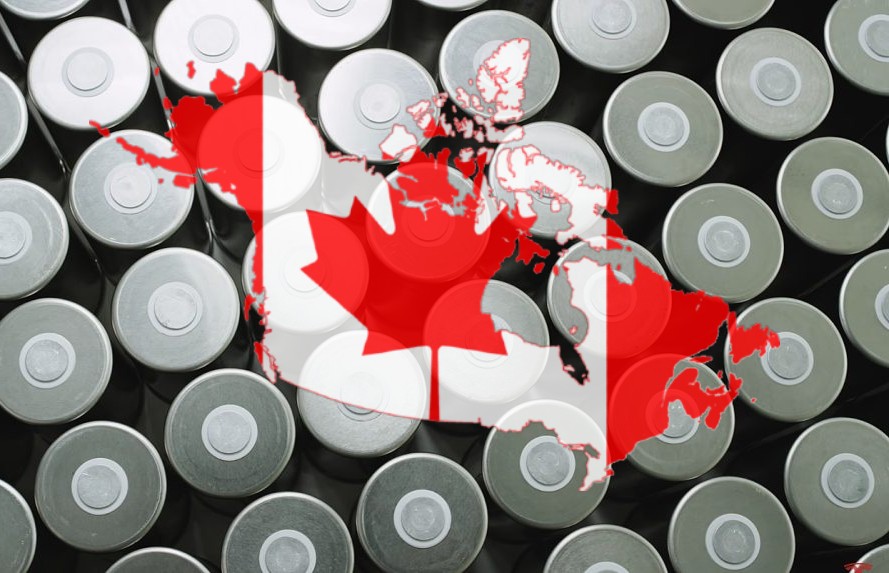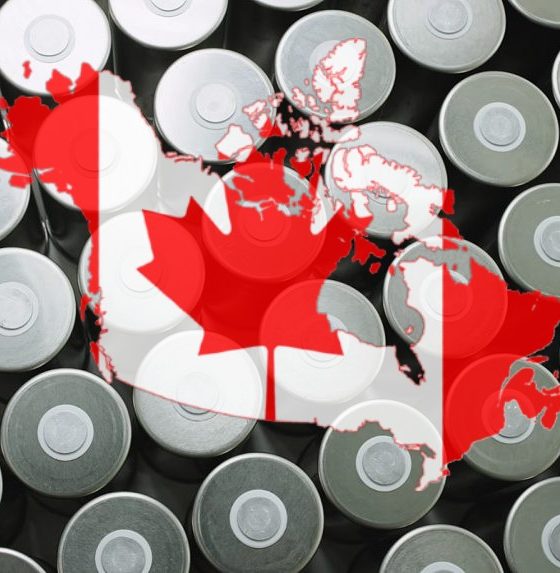It appears that Tesla and officials from Ontario, Canada, have been communicating about “investment opportunities” over the years. Documents outlining the correspondence between the electric vehicle maker and the Canadian province were reportedly retrieved by Electric Autonomy Canada through a freedom of information (FOI) request.
As noted by the publication, it submitted an FOI request on Tesla’s communications with the Ontario government between 2020 and 2023. From this, it was revealed that the EV maker has been in regular contact with several key officials from Ontario, such as Minister of Economic Development, Job Creation and Trade Vic Fedeli, and Minister of Energy Todd Smith, to name a few.
The correspondence reportedly involved some high-ranking Tesla executives as well, including CEO Elon Musk himself. One email reportedly sent last December by a commercial officer at the Ontario Trade and Investment Office in Dallas, TX, hinted at potential subsidies for EV battery production in the province. One of the email’s recipients was reportedly Musk.
“I wanted to forward an article that announces the intention of Canada to subsidize EV battery production. Just another indication of the commitment of Canada to become a hub for EV production in the future,” the letter read.
The publication noted that 150 documents were found as a result of its FOI request, and they spanned several topics. And while a notable number of the documents included redacted information, it was evident that Ontario is determined to secure an investment from the electric vehicle maker. One briefing note in particular, authored by a senior policy advisor for site planning and coordination at the Automotive Battery Office, explained how Ontario is an ideal site for Tesla.
“Ontario is the ideal destination for Tesla, thanks to our world-class automotive supply base with a growing electric vehicle assembly and battery supply chain footprint, reliable clean energy, critical mineral resources, a world-class workforce, and a thriving research and development (R&D) ecosystem,” the briefing note read.
Tesla’s own executives also appear to be optimistic about Ontario. An email from Iain Myrans, national senior manager of public policy and development for Canada at Tesla, indicated that the EV maker is noticing the wave of battery-related investments in the province.
“The multi-billion-dollar wave of investment by the industry into cathode, battery, and EV production in Ontario and Quebec has also been noticed over the past months. We also observed Bloomberg NEF battery supply chain ranking — putting Canada in the #2 spot, behind only China for battery materials processing and battery manufacturing. Ministers Champagne and Fedeli have both been in touch with me regularly to signal that Canada and Ontario will be ready to ensure Tesla gets a competitive and level playing field for any future investments,” the email read.
The idea of a potential Tesla Gigafactory in Canada was acknowledged by Elon Musk during the 2022 Cyber Rodeo. But since then, Tesla has confirmed and announced Giga Mexico instead. Despite this, Tesla has a strong presence in Canada. Electric Autonomy Canada‘s FOI request mentioned several research locations apart from the well-known Jeff Dahn Lab at Dalhousie University. These include a research center in Dartmouth that opened in 2016, a Mississauga-based research lab that opened in 2021, and a Markham facility that is involved in battery development and factory design, among others.
Don’t hesitate to contact us with news tips. Just send a message to simon@teslarati.com to give us a heads-up.

Elon Musk
Elon Musk and Tesla AI Director share insights after empty driver seat Robotaxi rides
The executives’ unoccupied tests hint at the rapid progress of Tesla’s unsupervised Robotaxi efforts.

Tesla CEO Elon Musk and AI Director Ashok Elluswamy celebrated Christmas Eve by sharing personal experiences with Robotaxi vehicles that had no safety monitor or occupant in the driver’s seat. Musk described the system’s “perfect driving” around Austin, while Elluswamy posted video from the back seat, calling it “an amazing experience.”
The executives’ unoccupied tests hint at the rapid progress of Tesla’s unsupervised Robotaxi efforts.
Elon and Ashok’s firsthand Robotaxi insights
Prior to Musk and the Tesla AI Director’s posts, sightings of unmanned Teslas navigating public roads were widely shared on social media. One such vehicle was spotted in Austin, Texas, which Elon Musk acknowleged by stating that “Testing is underway with no occupants in the car.”
Based on his Christmas Eve post, Musk seemed to have tested an unmanned Tesla himself. “A Tesla with no safety monitor in the car and me sitting in the passenger seat took me all around Austin on Sunday with perfect driving,” Musk wrote in his post.
Elluswamy responded with a 2-minute video showing himself in the rear of an unmanned Tesla. The video featured the vehicle’s empty front seats, as well as its smooth handling through real-world traffic. He captioned his video with the words, “It’s an amazing experience!”
Towards Unsupervised operations
During an xAI Hackathon earlier this month, Elon Musk mentioned that Tesla owed be removing Safety Monitors from its Robotaxis in Austin in just three weeks. “Unsupervised is pretty much solved at this point. So there will be Tesla Robotaxis operating in Austin with no one in them. Not even anyone in the passenger seat in about three weeks,” he said. Musk echoed similar estimates at the 2025 Annual Shareholder Meeting and the Q3 2025 earnings call.
Considering the insights that were posted Musk and Elluswamy, it does appear that Tesla is working hard towards operating its Robotaxis with no safety monitors. This is quite impressive considering that the service was launched just earlier this year.
Elon Musk
Starlink passes 9 million active customers just weeks after hitting 8 million
The milestone highlights the accelerating growth of Starlink, which has now been adding over 20,000 new users per day.

SpaceX’s Starlink satellite internet service has continued its rapid global expansion, surpassing 9 million active customers just weeks after crossing the 8 million mark.
The milestone highlights the accelerating growth of Starlink, which has now been adding over 20,000 new users per day.
9 million customers
In a post on X, SpaceX stated that Starlink now serves over 9 million active users across 155 countries, territories, and markets. The company reached 8 million customers in early November, meaning it added roughly 1 million subscribers in under seven weeks, or about 21,275 new users on average per day.
“Starlink is connecting more than 9M active customers with high-speed internet across 155 countries, territories, and many other markets,” Starlink wrote in a post on its official X account. SpaceX President Gwynne Shotwell also celebrated the milestone on X. “A huge thank you to all of our customers and congrats to the Starlink team for such an incredible product,” she wrote.
That growth rate reflects both rising demand for broadband in underserved regions and Starlink’s expanding satellite constellation, which now includes more than 9,000 low-Earth-orbit satellites designed to deliver high-speed, low-latency internet worldwide.
Starlink’s momentum
Starlink’s momentum has been building up. SpaceX reported 4.6 million Starlink customers in December 2024, followed by 7 million by August 2025, and 8 million customers in November. Independent data also suggests Starlink usage is rising sharply, with Cloudflare reporting that global web traffic from Starlink users more than doubled in 2025, as noted in an Insider report.
Starlink’s momentum is increasingly tied to SpaceX’s broader financial outlook. Elon Musk has said the satellite network is “by far” the company’s largest revenue driver, and reports suggest SpaceX may be positioning itself for an initial public offering as soon as next year, with valuations estimated as high as $1.5 trillion. Musk has also suggested in the past that Starlink could have its own IPO in the future.
News
NVIDIA Director of Robotics: Tesla FSD v14 is the first AI to pass the “Physical Turing Test”
After testing FSD v14, Fan stated that his experience with FSD felt magical at first, but it soon started to feel like a routine.

NVIDIA Director of Robotics Jim Fan has praised Tesla’s Full Self-Driving (Supervised) v14 as the first AI to pass what he described as a “Physical Turing Test.”
After testing FSD v14, Fan stated that his experience with FSD felt magical at first, but it soon started to feel like a routine. And just like smartphones today, removing it now would “actively hurt.”
Jim Fan’s hands-on FSD v14 impressions
Fan, a leading researcher in embodied AI who is currently solving Physical AI at NVIDIA and spearheading the company’s Project GR00T initiative, noted that he actually was late to the Tesla game. He was, however, one of the first to try out FSD v14.
“I was very late to own a Tesla but among the earliest to try out FSD v14. It’s perhaps the first time I experience an AI that passes the Physical Turing Test: after a long day at work, you press a button, lay back, and couldn’t tell if a neural net or a human drove you home,” Fan wrote in a post on X.
Fan added: “Despite knowing exactly how robot learning works, I still find it magical watching the steering wheel turn by itself. First it feels surreal, next it becomes routine. Then, like the smartphone, taking it away actively hurts. This is how humanity gets rewired and glued to god-like technologies.”
The Physical Turing Test
The original Turing Test was conceived by Alan Turing in 1950, and it was aimed at determining if a machine could exhibit behavior that is equivalent to or indistinguishable from a human. By focusing on text-based conversations, the original Turing Test set a high bar for natural language processing and machine learning.
This test has been passed by today’s large language models. However, the capability to converse in a humanlike manner is a completely different challenge from performing real-world problem-solving or physical interactions. Thus, Fan introduced the Physical Turing Test, which challenges AI systems to demonstrate intelligence through physical actions.
Based on Fan’s comments, Tesla has demonstrated these intelligent physical actions with FSD v14. Elon Musk agreed with the NVIDIA executive, stating in a post on X that with FSD v14, “you can sense the sentience maturing.” Musk also praised Tesla AI, calling it the best “real-world AI” today.










